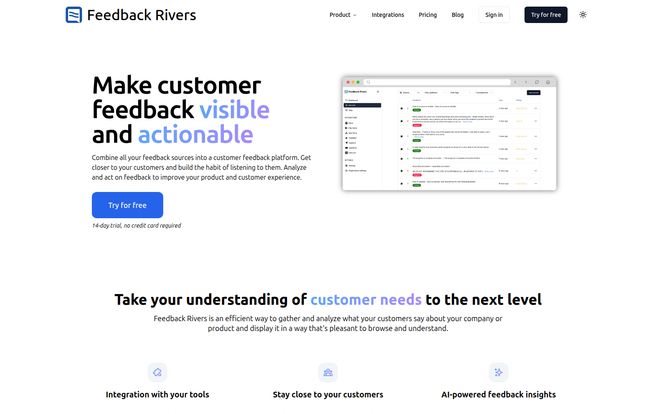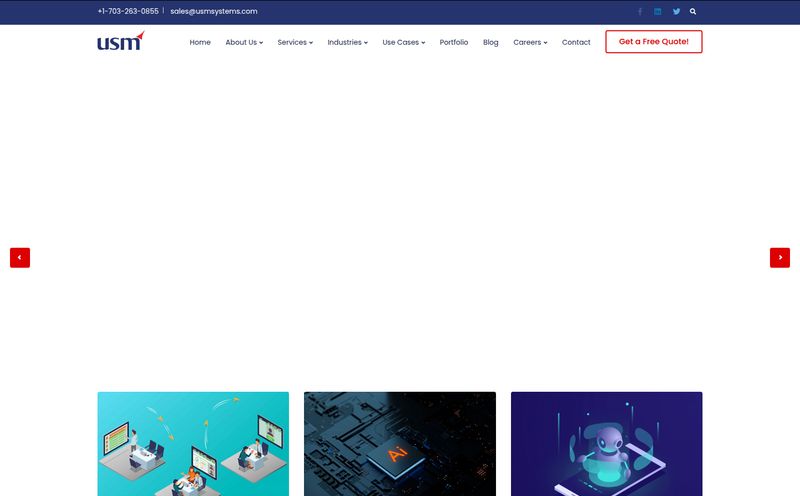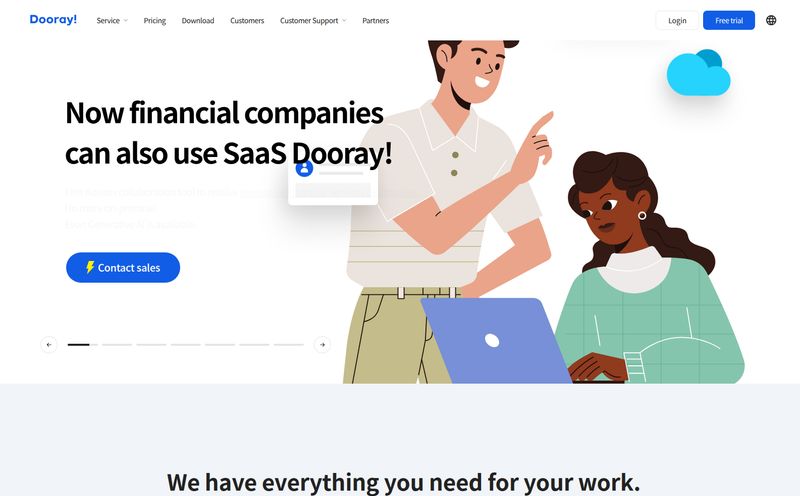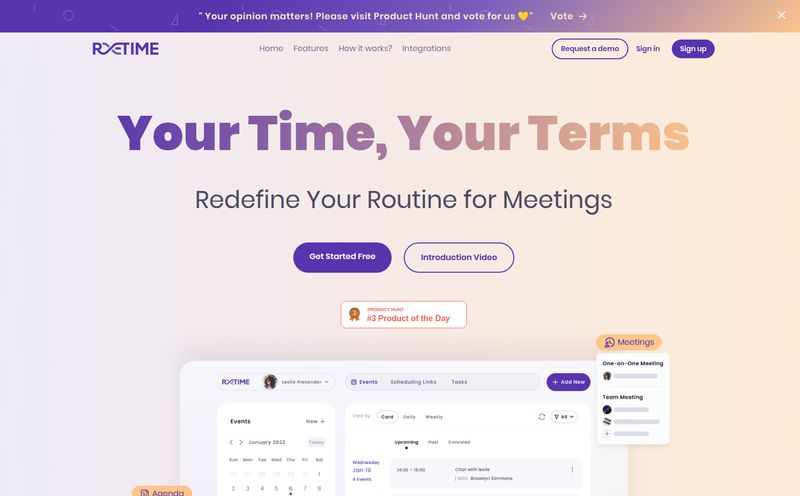If you work in product, customer success, or even marketing, you know the feeling. It starts with a trickle. A Slack DM from a sales rep, “Hey, customer X said they wish we had this feature.” Then an email forward. Then an App Store review. Pretty soon, you’re dealing with a firehose of customer feedback coming from a dozen different places. And what do we do? We create the Spreadsheet of Doom.
Oh, you know the one. It’s a Frankenstein's monster of columns, tabs, and half-baked tags. It’s where good ideas and critical insights go to die a slow, un-actioned death. I’ve built more of those spreadsheets than I care to admit. For years, the holy grail has been finding a way to funnel all those little streams of feedback into one place where they can actually be used. Not just collected.
So when I stumbled upon a tool called Feedback Rivers, the name alone got my attention. It promises to be a feedback aggregator, a central system of record. A dam for the feedback flood. But as we all know, promises are easy to make in the SaaS world. I decided to take a closer look, and here's what I found.
So, What Exactly Is Feedback Rivers?
At its core, Feedback Rivers is a platform designed to do one thing and do it well: bring all of your customer feedback into one place. Think of every source—your Intercom chats, Zendesk tickets, App Store reviews, Twitter mentions, NPS surveys, even those random emails—as a small stream. Feedback Rivers connects to these sources and channels all that water into a single, clear river.

Visit Feedback Rivers
The whole point isn’t just to store the feedback. That's what the spreadsheet does. The goal here is to make it visible and actionable for your entire team. It’s about creating a transparent process where feedback is seen, analyzed, and actually informs the product roadmap. It’s a shift from a reactive, chaotic process to a proactive, organized one. A way to build the habit of listening, as they say on their site. And frankly, that’s a habit more companies desperately need.
The Features That Actually Matter
A pretty dashboard is nice, but features are what get the job done. Here’s a breakdown of what makes Feedback Rivers tick, from my perspective.
Centralizing All Your Feedback Streams
This is the main event. The ability to integrate with the tools you already use is non-negotiable. I was pleased to see they cover the big ones, from support and chat tools to review aggregators and survey platforms. No one wants to rip and replace their entire tech stack for one new tool. The idea is to plug it in and let it start collecting. This single feature eliminates the soul-crushing manual labor of copy-pasting feedback from ten different browser tabs. That alone is a huge win.
The Magic of AI-Powered Insights
Okay, this is where things get really interesting. Just having all the feedback in one place is great, but you still have to make sense of it. What are the recurring themes? Is customer sentiment trending up or down? Manually tagging and categorizing hundreds of feedback entries is a full-time job. I should know, I’ve done it.
Feedback Rivers uses AI to help you understand the “what” behind the feedback. It analyzes comments to identify key topics and track performance over time. This is a game-changer. Instead of spending a day trying to figure out if more people are complaining about the UI or asking for a new integration, the AI gives you a head start. It’s not a magic bullet—I’m always a fan of having a human in the loop—but it turns hours of tedious work into minutes of review.
Playing Nice with Your Other Tools (Integrations)
I mentioned integrations before, but the Slack integration deserves its own shout-out. Getting feedback into the hands of the right people is half the battle. By piping relevant feedback directly into a dedicated Slack channel, you create visibility across the company. Your engineers can see the pain points firsthand. Your marketing team can see what features customers love. It breaks down silos and helps foster that customer-centric culture everyone’s always talking about. It makes feedback a team sport, not just a problem for the product manager.
Let's Talk About the Money: Feedback Rivers Pricing
Alright, the all-important question: what's this going to cost? The pricing structure is pretty straightforward, which I appreciate. No need to hire a cryptographer to figure it out.
Here’s a quick look at their plans:
| Plan | Price | Key Features | Best For |
|---|---|---|---|
| Starter | $49 /month | 5 integrations, 100 feedback records | Small teams or startups just getting started with systematizing feedback. |
| Business | $129 /month | 10 integrations, 1000 feedback records, AI insights | Growing companies with a decent volume of customer interaction. This feels like the sweet spot. |
| Enterprise | Contact for Price | Unlimited integrations & records, SAML, dedicated manager | Large organizations that need all the bells and whistles, plus advanced security and support. |
They also offer a 14-day free trial for the Starter and Business plans, so you can kick the tires before you commit. In my opinion, the 100-feedback-record limit on the Starter plan is a bit tight. If you have active users, you could burn through that pretty quickly. The Business plan seems like the most practical starting point for any established company.
The Good, The Bad, and The Realistic
No tool is perfect, so let’s get into the nitty-gritty. After looking things over, here’s my balanced take.
The Good Stuff
The biggest pro is the sheer relief of having a centralized feedback hub. It transforms feedback from a scattered liability into a browsable, strategic asset. The AI-powered analysis is a massive time-saver, and the Slack integration is brilliant for team-wide visibility. It creates transparency and makes it easier to build a solid customer feedback loop.
Things to Keep in Mind
On the flip side, like many SaaS tools, some of the more corporate-y features are gated behind the higher-tier plans. Things like SAML for single sign-on or getting a dedicated account manager are reserved for Enterprise customers. That’s pretty standard practice, but still something to be aware of. Also, as I mentioned, the Starter plan’s limits are something you could outgrow fast. It’s more of a taste test than a long-term solution for a growing buisness.
Is Feedback Rivers the Right Tool For You?
So, should you give it a shot? I’d say if you’re a product manager, UX lead, or part of a customer success team that’s currently living in spreadsheet hell, then absolutely yes. Check out the free trial. You’ll know pretty quickly if it solves your pain.
It’s especially powerful for growing companies that are serious about building their product based on what customers are actually saying. It provides the structure to turn good intentions into a repeatable process.
If you're a very early-stage startup with only a handful of users, you might be able to get by with a simple Trello board for a little while longer. But once the feedback starts coming from more than two places at once, the chaos begins. It's better to get ahead of it.
My Final Thoughts
Managing customer feedback is messy, complex work. It's easy to get overwhelmed and let valuable insights slip through the cracks. Tools like Feedback Rivers are designed to fix that fundamental problem. By giving you a single platform to aggregate, analyze, and act on what your users are telling you, it turns a chaotic flood of information into a powerful current that can guide your product forward.
Stop letting good feedback die in a spreadsheet. It deserves better. And honestly, so do you.
Frequently Asked Questions
- Can I get a refund if I don't like it?
- According to their site, refunds are available within the first paid month after your account is activated. After that first month, they don't offer refunds.
- Where is my data stored and is it secure?
- They state their servers are in the EU and are GDPR compliant. They also mention taking security seriously and implementing multiple measures to ensure data safety, which is standard and reassuring.
- How long does it take to set up Feedback Rivers?
- While every setup is different, the platform seems designed for ease of use. Their homepage says you can "sign up and set up all your feedback in minutes." Connecting your main sources like Intercom or your email should be pretty quick, allowing you to see value almost immediately.
- Can I import my old feedback from spreadsheets?
- Most platforms like this offer some form of CSV import to bring in historical data. While not explicitly stated in the top-level info, it's a highly common feature and would be worth asking their support team about during a trial.
- Is the AI analysis really accurate?
- In my experience with AI tools, they provide a fantastic first pass. The AI can instantly group 100 comments about "slow loading times" together, saving you hours. It’s a powerful assistant. However, a human touch is still valuable to catch nuance and context. Think of it as 90% of the tedious work done for you, leaving you to focus on the strategic 10%.
- Do you offer discounts for annual plans?
- Yes, they mention that if you're interested in an annual plan, you can contact them directly to work out a discount. This is a great way to save a bit of money if you're ready to commit long-term.
References and Sources
- Feedback Rivers Official Website
- Feedback Rivers Pricing Page
- HubSpot: "How to Build a Customer Feedback Loop That Works"
- Slack Official Website



